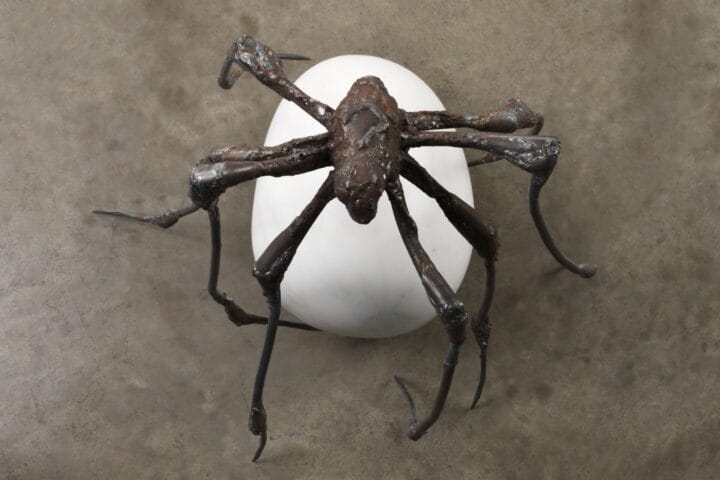Bonhams Hong Kong Fine Chinese Art sale on 27 May 2021 presents a curated section dedicated to women in Chinese art. Entitled Beauty and Beyond: Women in Chinese Art, the 64-lot strong section surveys the many representations of women in traditional and modern art history of Chinese culture.
Although beauty has always been an indispensable element in any art form, this section is curated to discuss that women in Chinese art were not just defined by their physical appearance. As beauty standards shifted from time to time, talent, accomplishment, virtue, and sacrifice were the constant values demonstrating a woman’s qualities to be emphasised and praised in Chinese art. The sale also traces how printing technology in Ming and Qing period proliferated new, popular images of women, from the rotund beauty in Tang to the emaciated, foot-binding standard in Ming and Qing, further to the liberated, natural charm from the 20th century and onwards.
Bonhams Head of Chinese Works of Art Department Hong Kong Xibo Wang commented: “In traditional Chinese art, women are often remembered as decorative figures on porcelain and works of art, helping to establish Confucian moral standards. But is it true? With Beauty and Beyond, we aim to juxtapose women representations in traditional and modern Chinese art against the much more active role they played as artists since the 20th century, hoping to bring a broader, richer, and perhaps fairer reading into understanding women in Chinese art.”
Highlights of the sale include:
Zhang Daqian (1899-1983), The Reading Lady. Estimate: HK$5,000,000-6,000,000. Acquired directly from the artist by the original owner Lu Danlin (1895-1972) and subsequently by renowned female artist Fang Junbi (1898-1986), and later by Professor Sheung Chung Ho (1937-2010), this is arguably one of the finest works by the prodigious Chinese painter among his small known corpus of portraits painted between 1941 and 1949. Unlike his early works, Zhang was able to revitalise the imagery used by traditionalist masters, instead adopting the voluptuous sculptural elements of the female form popular during the Sui and Tang dynasties. The female subject in his portraits indicate a strong sense of self-confidence and independence, paralleling with the values embraced by modern society.
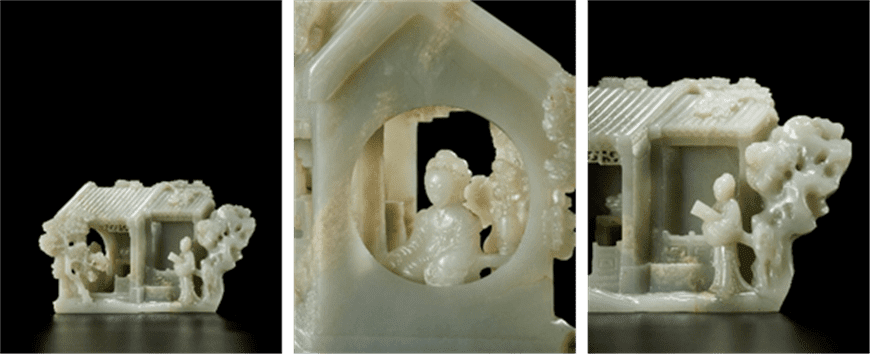
An Extremely Rare Pale Green Jade ‘Romance of The Western Chamber’ Openwork Boulder, Qianlong. Estimate: HK$6,000,000-8,000,000. The jade pavilion portrays a scene from The Romance of the Western Chamber, and is likely inspired by the 18th century woodblock print illustration of the story. A young lady – the female protagonist Cui Yingying – is seated looking out from a circular window cut through from the wall, and a female attendant is carrying a qin walking in the garden. This exceptional, lustrous jade pavilion and lady group can be numbered amongst the rarest jade carvings of its type, made during the celebrated Qianlong reign for the Imperial Court. It is exceedingly rare to find a jade carving in an architectural form with naturalistic execution to details, displaying an ultimate ingenuity of craftsmanship and design.
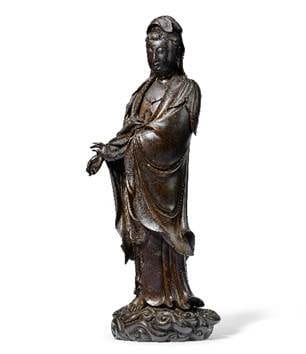
A Rare and Large Silver-Inlaid Bronze Figure of Guanyin, 16th/17th Century. Estimate: HK$3,500,000-4,500,000. This feminine appearance of Guanyin – otherwise known as the Chinese mother goddess – appeared to emerge in the early Tang Dynasty, even though traditionally it could appear in any gender to expound Buddhist teaching. This rare bronze figure is outstanding for its extraordinary attention to detail and sculptural qualities. Only a few bronze Guanyin figures of comparable size with similar hand gestures dated to the Ming dynasty seem to be recorded.
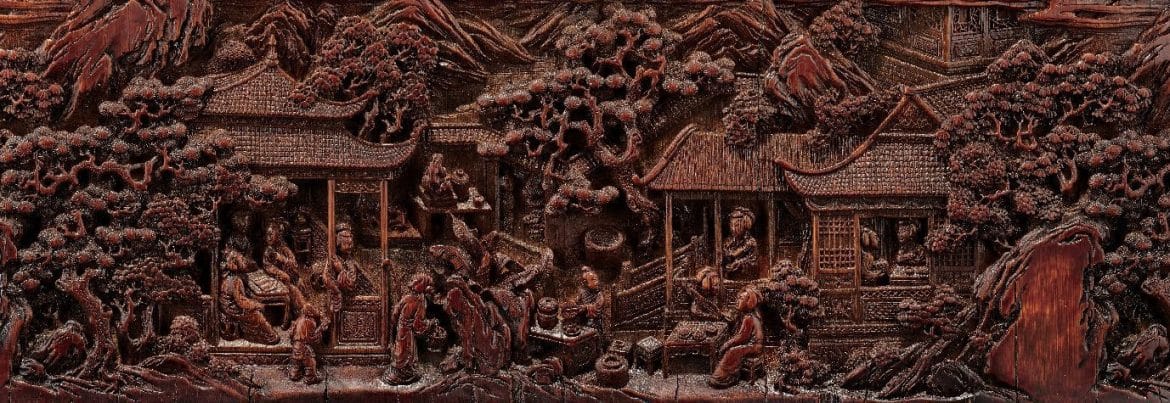
A Superbly Carved Bamboo ‘Ten Ladies’ Brushpot, 18th Century. Estimate: HK$400,000-600,000. This rare brushpot with women as the subject is extraordinary for the quality of the high relief carving and the meticulous rendering of the details. The exterior of this lot is superbly carved with a continuous lush garden scene depicting ten old ladies sitting, chatting, entertaining with three young attendants, preparing tea, holding books and opening a door to the garden wall, echoing the painting ‘Ten Beauties’ from Five Dynasties.
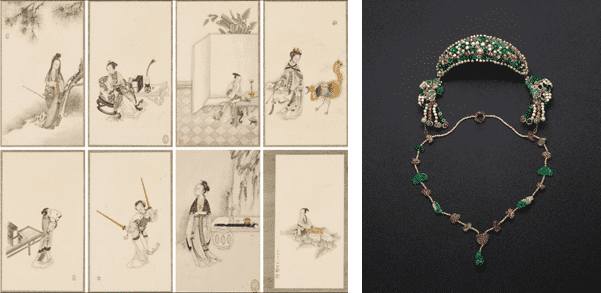
Gai Qi (1774-1829), Beauties. Estimate: HK$400,000-500,000. Gai Qi was one of the most accomplished artists who mastered painting lady’s portrait in the Qing Dynasty. He illustrated the important fiction in Chinese literature history, Dream of the Red Chamber, or known as The Story of Stone.
A Very Rare Jadeite, Pearl, Jadeite and Gemstone-Inset Headdress and Necklace Set, 19th Century. Estimate: HK$600,000-800,000. The richly adorn headdress and temple pendants belong to a group of delicately crafted ornaments made for further decoration of the Imperial headdress known as dianzi.
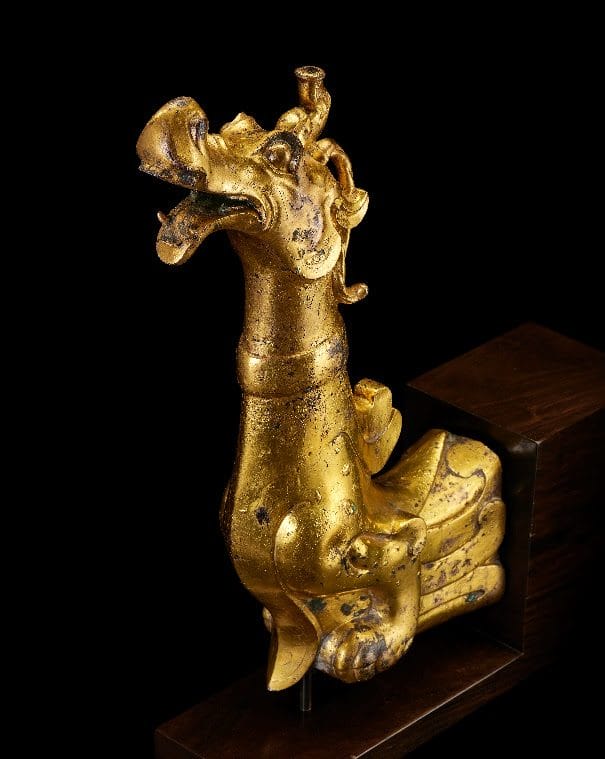
Alongside Beauty and Beyond, the regular Fine Chinese Art session also highlights an Important and Very Rare Large Gilt-Bronze ‘Dragon’ Terminal, Han Dynasty from a distinguished British private collection and previously sold by the eminent dealer Eskenazi Ltd. London. Remarkable for its striking form and powerful dynamism, this was most probably the ornamental terminal once placed at the end of the curved shaft on a chariot during the Han dynasty. The use of bronze terminals in forms of figures and animals to decorate the curved shaft of a chariot appeared during the Shang and Zhou dynasties, and such tradition appeared to continue during the Qin and Han dynasties. According to the Han dynasty literature, the shaft of a chariot carrying the empress or the emperor is decorated with gilt and incised patterns of clouds. The finely-incised cloud pattern around the body of the dragon in this lot hence was very likely a chariot fitting for the emperor. This lot carries an estimate of HK$2,500,000-3,500,000.



